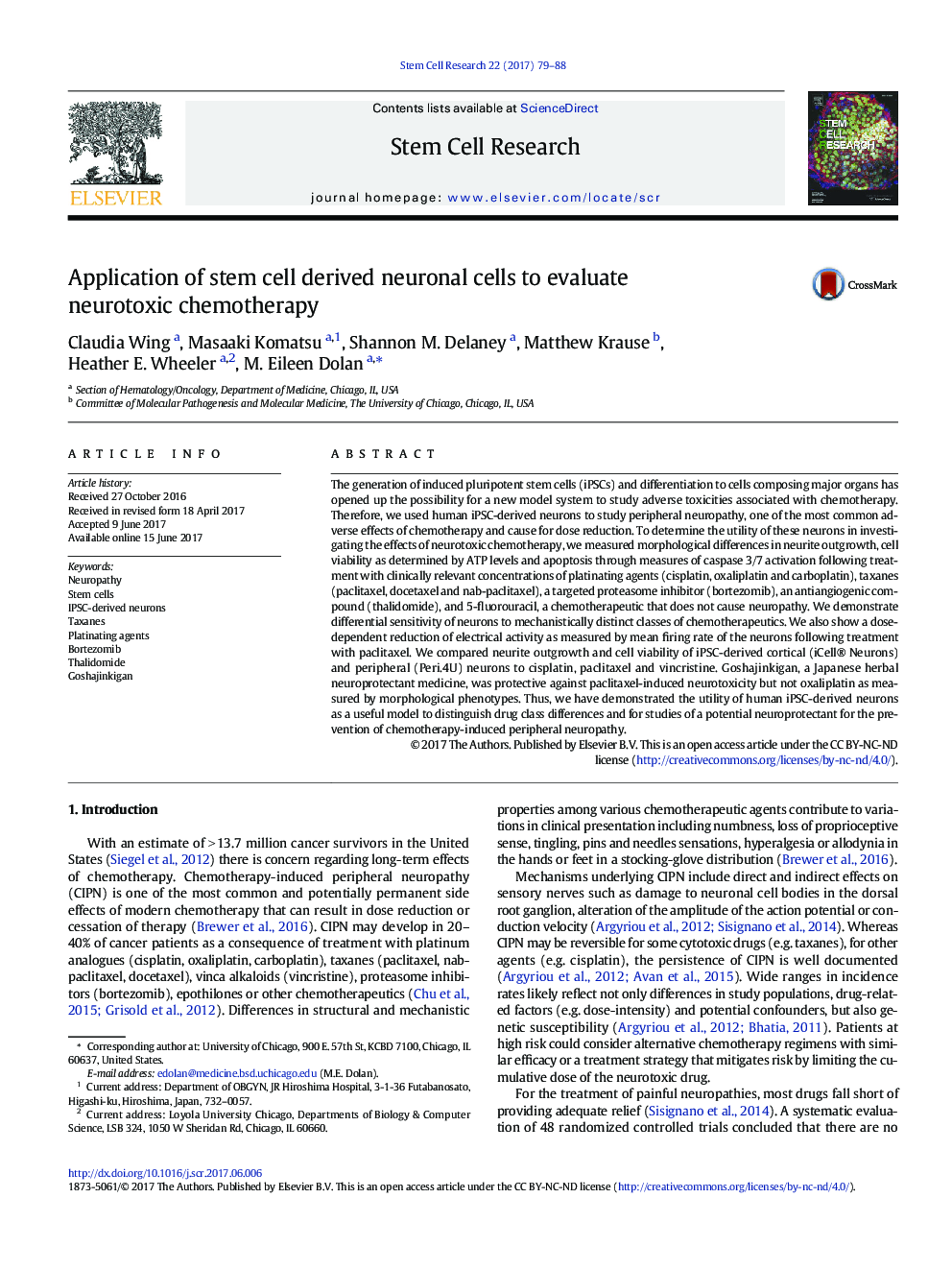| Article ID | Journal | Published Year | Pages | File Type |
|---|---|---|---|---|
| 5522813 | Stem Cell Research | 2017 | 10 Pages |
â¢Clinically relevant doses of chemotherapeutics cause morphological changes to iPSC-derived neurons.â¢Agents not known to cause peripheral neuropathy in patients do not result in neurite outgrowth inhibition.â¢Commercial peripheral neurons are generally more sensitive to chemotherapeutics than cortical neurons.â¢Goshajinkigan(GJG) protects neurons against paclitaxel-induced effects, but not cisplatin or oxaliplatin.â¢Paclitaxel, at nontoxic dosages, results in a dose dependent decrease in mean firing rate as measured using multi electrode array.
The generation of induced pluripotent stem cells (iPSCs) and differentiation to cells composing major organs has opened up the possibility for a new model system to study adverse toxicities associated with chemotherapy. Therefore, we used human iPSC-derived neurons to study peripheral neuropathy, one of the most common adverse effects of chemotherapy and cause for dose reduction. To determine the utility of these neurons in investigating the effects of neurotoxic chemotherapy, we measured morphological differences in neurite outgrowth, cell viability as determined by ATP levels and apoptosis through measures of caspase 3/7 activation following treatment with clinically relevant concentrations of platinating agents (cisplatin, oxaliplatin and carboplatin), taxanes (paclitaxel, docetaxel and nab-paclitaxel), a targeted proteasome inhibitor (bortezomib), an antiangiogenic compound (thalidomide), and 5-fluorouracil, a chemotherapeutic that does not cause neuropathy. We demonstrate differential sensitivity of neurons to mechanistically distinct classes of chemotherapeutics. We also show a dose-dependent reduction of electrical activity as measured by mean firing rate of the neurons following treatment with paclitaxel. We compared neurite outgrowth and cell viability of iPSC-derived cortical (iCell® Neurons) and peripheral (Peri.4U) neurons to cisplatin, paclitaxel and vincristine. Goshajinkigan, a Japanese herbal neuroprotectant medicine, was protective against paclitaxel-induced neurotoxicity but not oxaliplatin as measured by morphological phenotypes. Thus, we have demonstrated the utility of human iPSC-derived neurons as a useful model to distinguish drug class differences and for studies of a potential neuroprotectant for the prevention of chemotherapy-induced peripheral neuropathy.
Graphical abstractDownload high-res image (241KB)Download full-size image
